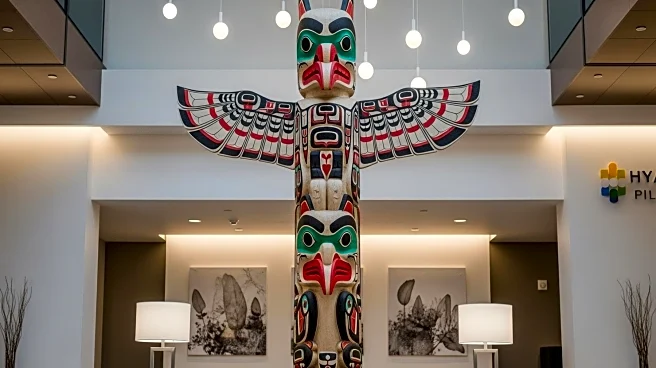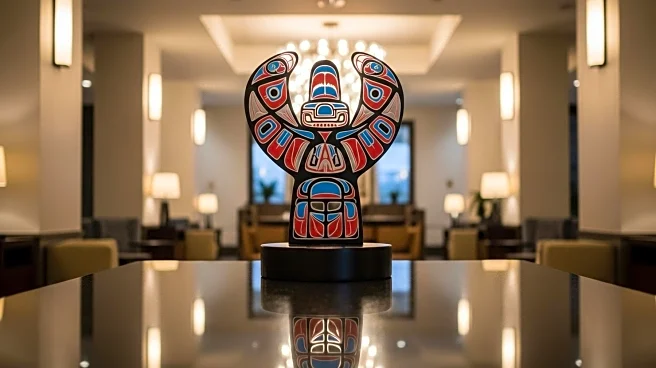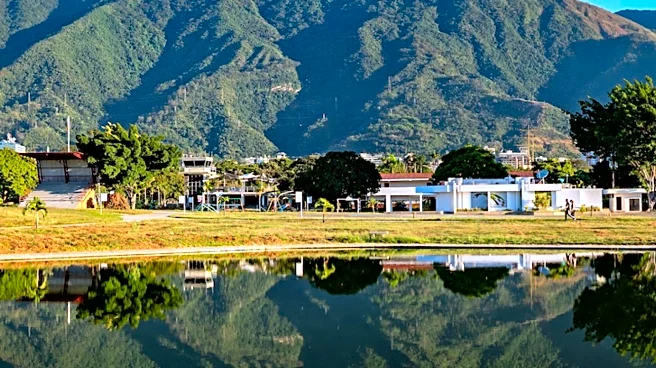What's Happening?
Hyatt Place Whitehorse has opened its doors in Canada's Yukon, marking the brand's first property in the region and the second purpose-built hotel in Whitehorse in over 50 years. Developed by Northern Vision Development Limited Partnership, which is majority First Nations owned, the hotel integrates Yukon First Nations culture into its design. Indigenous carvings and artwork are featured throughout the property, reflecting the region's heritage. The hotel offers 115 guest rooms with mountain views, locally inspired dining, and flexible meeting spaces. It aims to connect guests with the cultural heritage and landscapes of Whitehorse and the Yukon.
Why It's Important?
The opening of Hyatt Place Whitehorse is significant as it represents a blend of modern hospitality with cultural heritage, promoting Indigenous art and culture. This initiative supports local employment, creating 40 jobs, and enhances tourism in the Yukon by offering a culturally enriched experience. The integration of First Nations culture into the hotel's design highlights the importance of preserving and celebrating Indigenous heritage, potentially setting a precedent for future developments in the region. It also contributes to the local economy by attracting visitors interested in the unique cultural and natural offerings of the Yukon.
What's Next?
Hyatt Place Whitehorse is expected to attract tourists and business travelers, boosting local tourism and economic activity. The hotel is part of the World of Hyatt loyalty program, offering members the opportunity to earn and redeem points, which may increase visitor engagement. As the hotel establishes itself, it may inspire similar developments that integrate local culture and heritage, fostering a deeper appreciation for Indigenous contributions. The success of this venture could lead to more culturally inclusive projects in the hospitality industry.
Beyond the Headlines
The integration of Indigenous culture into Hyatt Place Whitehorse's design raises awareness about the importance of cultural representation in commercial spaces. It may encourage other businesses to adopt similar practices, promoting diversity and inclusion. This approach not only enriches the guest experience but also supports Indigenous artists and communities, contributing to cultural preservation and economic empowerment.












